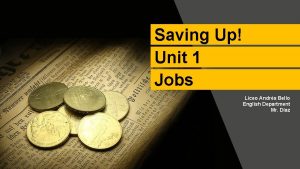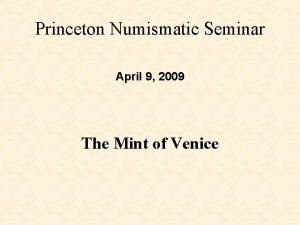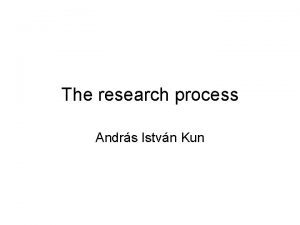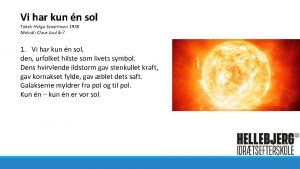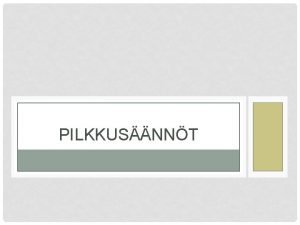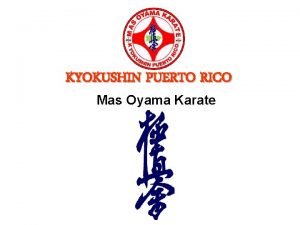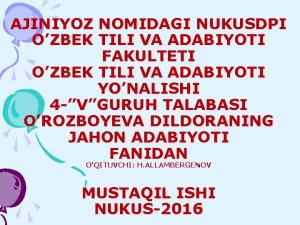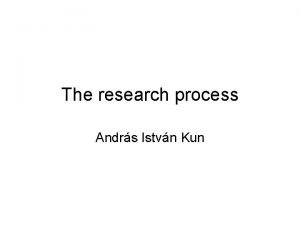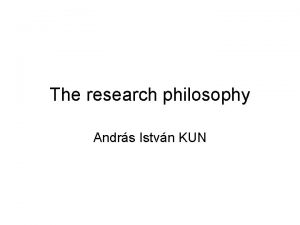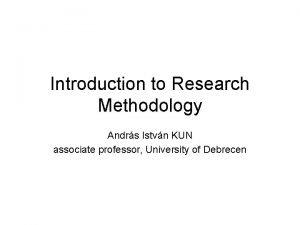The research process Andrs Istvn Kun Different disciplines









- Slides: 9

The research process András István Kun

Different disciplines • Research methodology is a supporting subject • Different disciplines have different paradigms • Only the substance of research is similar

The „research journey” • (I) Deciding what • (II) Planning how • (III) Actually doing

Difference between qualitative and quantitative research • Qualitative: – – – – Empiricist (sensation) Flexible/open/unstructured To describe variation, situation, issue… Fewer cases Wider focus (multiple issues) To explore Narrative • Quantitative: – – – – Rationalism (reason) Rigid/predetermined/structured Quantification Greater sample Narrow focus To explain Statistical methods, analytical

A Classification of Marketing Research Designs Fig. 3. 1 Research Design Conclusive Research Design Exploratory Research Design Descriptive Research Cross-Sectional Design Single Cross. Sectional Design Longitudinal Design Multiple Cross. Sectional Design Causal Research

Exploratory & Conclusive Research Differences Table 3. 1 Exploratory Conclusive Objective: To provide insights and understanding. To test specific hypotheses and examine relationships. Characteristics: Information needed is defined only loosely. Research process is flexible and unstructured. Sample is small and nonrepresentative. Analysis of primary data is qualitative. Information needed is clearly defined. Research process is formal and structured. Sample is large and representative. Data analysis is quantitative. Findings /Results: Tentative. Conclusive. Outcome: Generally followed by further exploratory or conclusive research. Findings used as input into decision making.

A Comparison of Basic Research Designs Table 3. 2 Exploratory Descriptive Causal Objective: Discovery of ideas Describe market and insights characteristics or functions Determine cause and effect relationships Characteristics: Flexible, versatile Manipulation of one or more independent variables Marked by the prior formulation of specific hypotheses Often the front end Preplanned and of total research structured design Methods: Expert surveys Pilot surveys Secondary data Qualitative research Secondary data Surveys Panels Observation and other data Control of other mediating variables Experiments

An 8 step model of research processes 1. Formulating the research problem (specification) 2. Conceptualising 1. (valid, workable, managable) 3. 4. 5. 6. 7. 8. Constructing an instrument for data collection Selecting a sample (sampling) Writing a research proposal Collecting data Processing data Writing a report

Thanks for your attention
